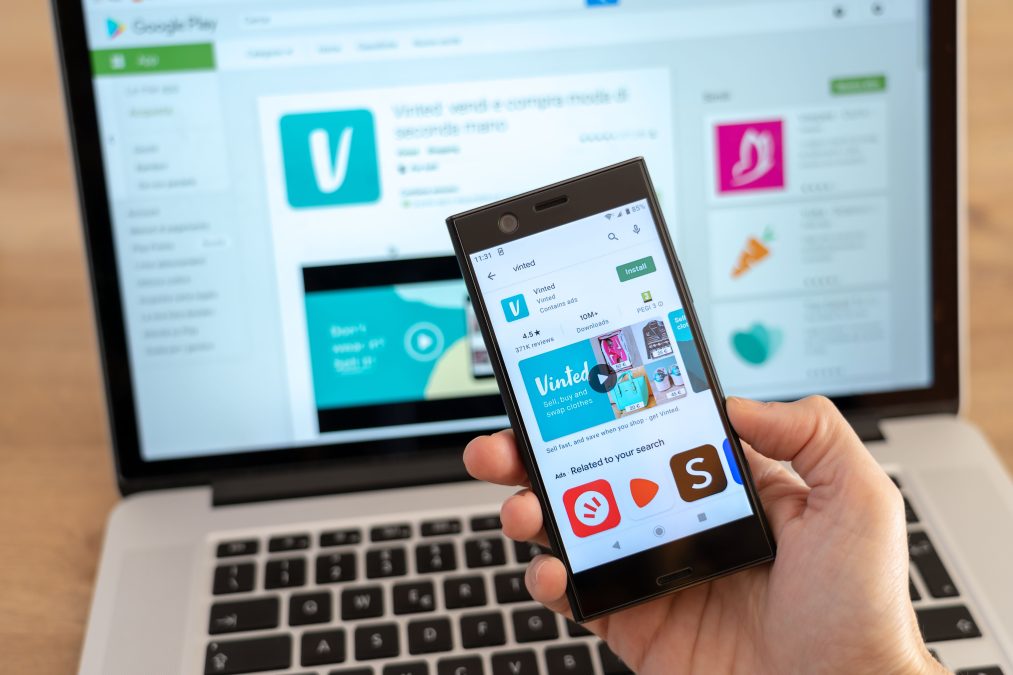With the rise of mobile usage, having a mobile-friendly website is essential. However, converting your WordPress website into a mobile app can take your business to the next level, providing a better user experience and enhancing customer engagement. The good news is that you can easily turn your WordPress website into a fully functional Android app.
This guide will walk you through the steps of converting your WordPress site into an Android app, explore the benefits of doing so, and discuss the tools you’ll need to get started. We’ll also cover best practices to ensure your app meets user expectations.
Why Convert a WordPress Website into an Android App?
Before diving into the technicalities of creating an app from your WordPress site, let’s explore why this is a valuable step for your business.
1. Improved User Experience
While a mobile-optimized website is essential, a mobile app offers a more seamless and optimized experience for mobile users. Apps load faster, are more intuitive, and can leverage device features like push notifications, GPS, and offline access, enhancing overall user interaction.
2. Increased Engagement
Mobile apps allow businesses to engage with their users more effectively. Through push notifications, in-app messages, and personalized user experiences, an app helps keep users informed and engaged, increasing the likelihood of repeat visits and conversions.
3. Branding Opportunities
An app provides a dedicated space on users’ devices, making it easier for them to remember and interact with your brand. With customized branding options, you can create a more immersive and consistent brand experience.
4. Offline Access
Unlike websites that require an internet connection to function, apps can offer offline access to certain features and content. This is especially important for businesses that want to maintain user interaction even when there’s no network available.
5. Direct Access to Customers
An Android app allows businesses to bypass browser limitations and connect directly with their users. This can create a more personalized and controlled user experience, as apps are independent of external factors like browser compatibility and loading issues.
How to Create an Android App from Your WordPress Site
Now that we’ve discussed the benefits, let’s break down the steps you’ll need to take to convert your WordPress website into an Android app. This process is straightforward, thanks to several tools and services designed specifically for this purpose.
Step 1: Prepare Your WordPress Website
Before you start converting your site, ensure that your WordPress website is fully optimized for mobile users. If your site doesn’t already have a responsive design, it’s crucial to implement one. A few key factors to consider:
- Responsive Theme: Choose a mobile-friendly WordPress theme that adapts well to different screen sizes.
- Page Speed: Use tools like Google PageSpeed Insights to improve your website’s loading speed.
- Plugins: Ensure that your site’s essential functionality, such as forms or eCommerce features, works smoothly on mobile devices.
Having a well-optimized mobile website will make the app development process smoother and result in a better user experience.
Step 2: Choose the Right Plugin or Service to Convert Your Site
WordPress offers several plugins and third-party services that allow you to convert your website into an Android app. Here are some of the most popular options:
1. AppPresser
AppPresser is one of the most widely used platforms to convert a WordPress site into a mobile app. It allows full integration with WordPress and popular plugins like WooCommerce, BuddyPress, and LearnDash. AppPresser offers a user-friendly interface, giving you complete control over your app’s appearance and functionality.
Key Features
- Deep integration with WordPress plugins.
- Push notifications for Android users.
- Offline capabilities.
- Access to device features like camera, GPS, and contacts.
2. MobiLoud
MobiLoud is another reliable option to convert your WordPress website into an Android app. It’s a quick and efficient service, especially for news websites, blogs, and eCommerce platforms. MobiLoud handles most of the technical work, including app store submissions.
Key Features
- Customizable design with your branding.
- Automatic updates synced with your WordPress content.
- Push notifications and monetization options.
- Full-service approach, including Google Play Store submission.
3. AndroApp
AndroApp is a more affordable option to convert WordPress sites into Android apps. It’s known for its lightweight design and ease of use, making it a good choice for small blogs or content-heavy websites.
Key Features:
- Offline support for users.
- Push notifications.
- Easy customization of app themes.
- Ad integration to monetize your app.
4. WPMobile.App
WPMobile.App is another user-friendly plugin that allows you to create both Android and iOS apps from your WordPress site. This plugin provides extensive customization options, allowing you to adjust your app’s appearance and functionalities according to your needs.
Key Features:
- Customizable themes and colors.
- Real-time synchronization with WordPress.
- Push notifications for app users.
- Lifetime license options for both Android and iOS apps.
Step 3: Customize the App’s Design and Features
Once you’ve chosen a plugin or service, the next step is to customize your app’s design and functionality. Most platforms offer intuitive drag-and-drop builders, making it easy to create a mobile-friendly interface that aligns with your website’s branding.
Here are some aspects to focus on during customization:
- App Layout: Ensure that the layout is intuitive and user-friendly. Navigation menus, product displays, and content should be easy to browse on a mobile device.
- Branding: Customize the app’s colors, fonts, and icons to match your brand’s visual identity.
- Push Notifications: Set up push notifications to keep users informed about new content, promotions, or product launches.
- Monetization: If you plan to monetize your app, integrate ads or set up in-app purchases during this stage.
Step 4: Test Your Android App
Before launching your app, it’s crucial to thoroughly test it on multiple devices. Most platforms provide testing tools that allow you to preview your app in real time. Here’s a checklist of things to test:
- Performance: Check the app’s speed and loading times, especially for pages with images or multimedia.
- Functionality: Ensure that all buttons, links, forms, and interactive elements work properly.
- Push Notifications: Test notifications to confirm they are being delivered correctly to users.
- Offline Mode: If your app supports offline access, make sure that content is available when the user is not connected to the internet.
Testing your app across various Android devices and screen sizes will help you identify any potential issues before launch.
Step 5: Publish Your App on the Google Play Store
Once your app is fully functional and tested, it’s time to publish it on the Google Play Store. Depending on the plugin or service you used, this process may be handled for you, or you may need to do it manually.
To submit your app to the Play Store, you’ll need to:
- Create a Google Play Developer Account.
- Generate and upload the APK file of your app.
- Write a compelling app description and add screenshots.
- Set your app’s pricing and distribution options.
- Submit the app for review by Google.
Google typically reviews and approves apps within a few days. Once approved, your app will be available for download by millions of Android users worldwide.
Step 6: Promote Your Android App
After your app goes live, the work doesn’t stop. You’ll need to actively promote your app to drive downloads and increase user engagement. Here are some strategies to consider:
- Announce the App on Your Website: Let your existing website visitors know that they can now download your app from the Play Store. Use banners, pop-ups, or dedicated landing pages to highlight the benefits of using the app.
- Leverage Social Media: Share your app launch on social media channels like Facebook, Twitter, and Instagram. Highlight the unique features of your app and offer incentives for downloading (e.g., exclusive discounts).
- Encourage Reviews: Positive reviews are essential for app store visibility and credibility. Encourage your app users to leave reviews on the Play Store.
- Run Ads: Consider using Google Ads or social media ads to target potential users and promote your app.
Best Practices for a Successful Android App
To ensure the long-term success of your Android app, follow these best practices:
- Keep Your App Updated: Regularly update your app to fix bugs, introduce new features, and stay compatible with the latest Android versions.
- Monitor User Feedback: Pay attention to user reviews and feedback, and use this information to make improvements to your app.
- Optimize for Performance: Continuously monitor the app’s performance to ensure it remains fast, responsive, and user-friendly.
- Offer Support: Make it easy for users to contact you in case they encounter issues or have questions about the app.
Conclusion
Yes, you can absolutely create an Android app from your WordPress website, and the process is simpler than you might think. With tools like AppPresser, MobiLoud, AndroApp, and WPMobile.App, converting your site into a fully functional Android app is achievable even without technical expertise.
By offering a more immersive user experience, increased engagement opportunities, and better performance, an Android app can significantly boost your business’s mobile presence. Follow the steps outlined above to convert your WordPress site into an app, and leverage mobile technology to drive more traffic and conversions.
Interesting Reads:
Empower Your WordPress Blogs: A Comprehensive Guide to Essential Plugins for Success
Empowering Your Workflow: Essential WP Agency Tools You Need





